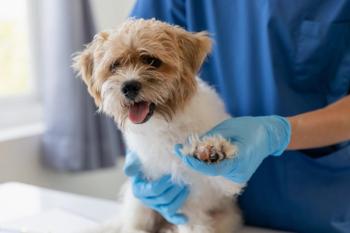
42 U.S. scientists explore zoonotic disease risks
Lansdowne, Va. -- Forty-two U. S. scientists and specialists gathered at a national forum to consider ways to defend the United States from outbreaks of zoonotic diseases.
Lansdowne, Va.
-- Forty-two U. S. scientists and specialists gathered at a national forum to consider ways to defend the United States from outbreaks of zoonotic diseases.
This month's Forum on Science and Biothreats was sponsored by the National Center for Foreign Animal and Zoonotic Disease Defense (FAZD), a Department of Homeland Security Center of Excellence.
Zoonotic diseases pose catastrophic risks to U.S. public health and to the nation's $1 trillion agricultural economy.
Forum organizers brought multiple speakers from varied disciplines to talk about novel applications and strategies to combat zoonotic disease transmission. Notable participants from veterinary medicine included: Drs. L. Garry Adams, associate dean for research, Texas A&M University; Tanya Graham, associate director of the Animal Disease Research & Diagnostic Laboratory at South Dakota State University; Richard Isaacson, University of Minnesota, Department of Veterinary and Biomedical Sciences; Thomas G. Ksiazek, chief of Special Pathogen Branch of the National Center for Zoonotic, Vector-Borne and Enteric Diseases; Elizabeth Lautner, director of National Veterinary Services Laboratories, USDA; Gary A. Vroegindewey, Colonel, U.S. Army Veterinary Corps; Scott Walden, director of the Animal Resources/University Attending Veterinarian at North Dakota State University; Terrence M. Wilson, veterinary pathologist with David Strategic Innovations, Inc.
Speakers presented novel discoveries and techniques from disciplines of epidemiology, pathology, microbiology, wildlife ecology, mathematics and computer modeling. Discussions followed on how these concepts may apply to detecting, mitigating and recovering from outbreaks, epidemics and pandemics.
"Discoveries and technologies emerging in any of these disciplines may offer potential breakthroughs for detection, mitigation or recovery from zoonotic outbreaks," explains Dr. Neville P. Clarke, FAZD Center director. "Our goal was to keep the forum small enough to encourage dynamic interactions between the speakers, panelists and participants. Such interactions often result in the long-term, professional relationships that are essential to developing a national defense against dangerous zoonotic diseases."
Some of the innovations discussed:
- A "Doc in a Box" on every American kitchen table that detects highly contagious and dangerous zoonotic diseases in people before symptoms appear.
- Computer-generated "lab animals" that increase the speed and decrease the cost of developing vaccines to protect humans from dangerous zoonotic diseases.
- Software that rapidly analyzes complex data and displays the results as easily understood graphs, thus freeing researchers to spend more time and resources on developing products to mitigate outbreaks of dangerous zoonotic diseases.
Participants included leading scientists and scholars from major U.S. universities and national laboratories, state and federal officials, and private sector specialists. Other universities represented included Harvard, Georgetown, Johns Hopkins, Columbia, Purdue and Rutgers. National laboratories included Lawrence Livermore, Los Alamos, Sandia and Pacific Northwest. Also represented were the CDC, Department of Homeland Security, U.S. Army, Battelle and Pfizer.
Newsletter
From exam room tips to practice management insights, get trusted veterinary news delivered straight to your inbox—subscribe to dvm360.




